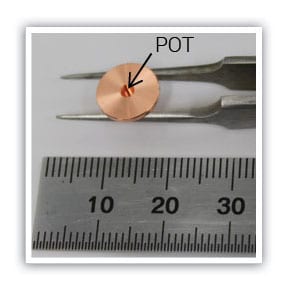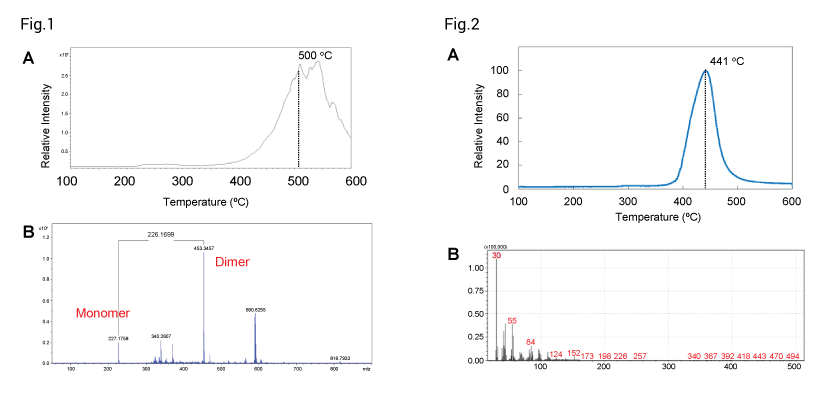The Comparison Of ionRocket
and EGA-MS For Nylon-6,6 Analysis
Background
IonRocket creates a temperature/time gradient for samples as they are subjected to DART®-MS (Direct Analysis in Real time – Mass Spectrometry) analysis: from room temperature to 600ºC at up to 100ºC/ min. EGA (Evolved Gas Analysis) is a second option for subjecting a sample to a temperature gradient during analysis by MS.
In this report, we compare ionRocket-DART®-MS analysis to EGA-MS analysis.
Sample
Nylon-6,6

Method
For ionRocket analysis, samples were sliced into 0.5 mm x 0.5 mm sections and placed in a copper sample pot. The temperature gradient applied was from room temperature to 600ºC at 100ºC/min. The total run time was roughly 7 min.For EGA-MS analysis, 10 mg sample was collected, put into the sample cup and analyzed. The temperature was raised by EGA-MS from 100ºC to 600ºC at 20ºC/min and then kept at 600ºC for 5 min. Total run time was 30 minutes
Result
The results of ionRocket and EGA-MS analysis are shown in Figure 1 and 2, respectively.
Fragment ions were not observed in the ionRocket sample because DART is a soft ionization technique which limits fragmentation. Instead, monomers and dimers were among the principal species observed (Figure 1). On the other hand, in the EGA-MS analysis fragment ions and pyrolysis products were the principal components (Figure 2B).
 Figure 1. ionRocket analysis: (A) Thermogram (B) Averaged mass spectrum of base peak
Figure 1. ionRocket analysis: (A) Thermogram (B) Averaged mass spectrum of base peakFigure 2. EGA-MS analysis: (A) Thermogram (B) Averaged mass spectrum of base peak
Target
Material Analysis / Foreign Material Analysis / Polymer Analysis
